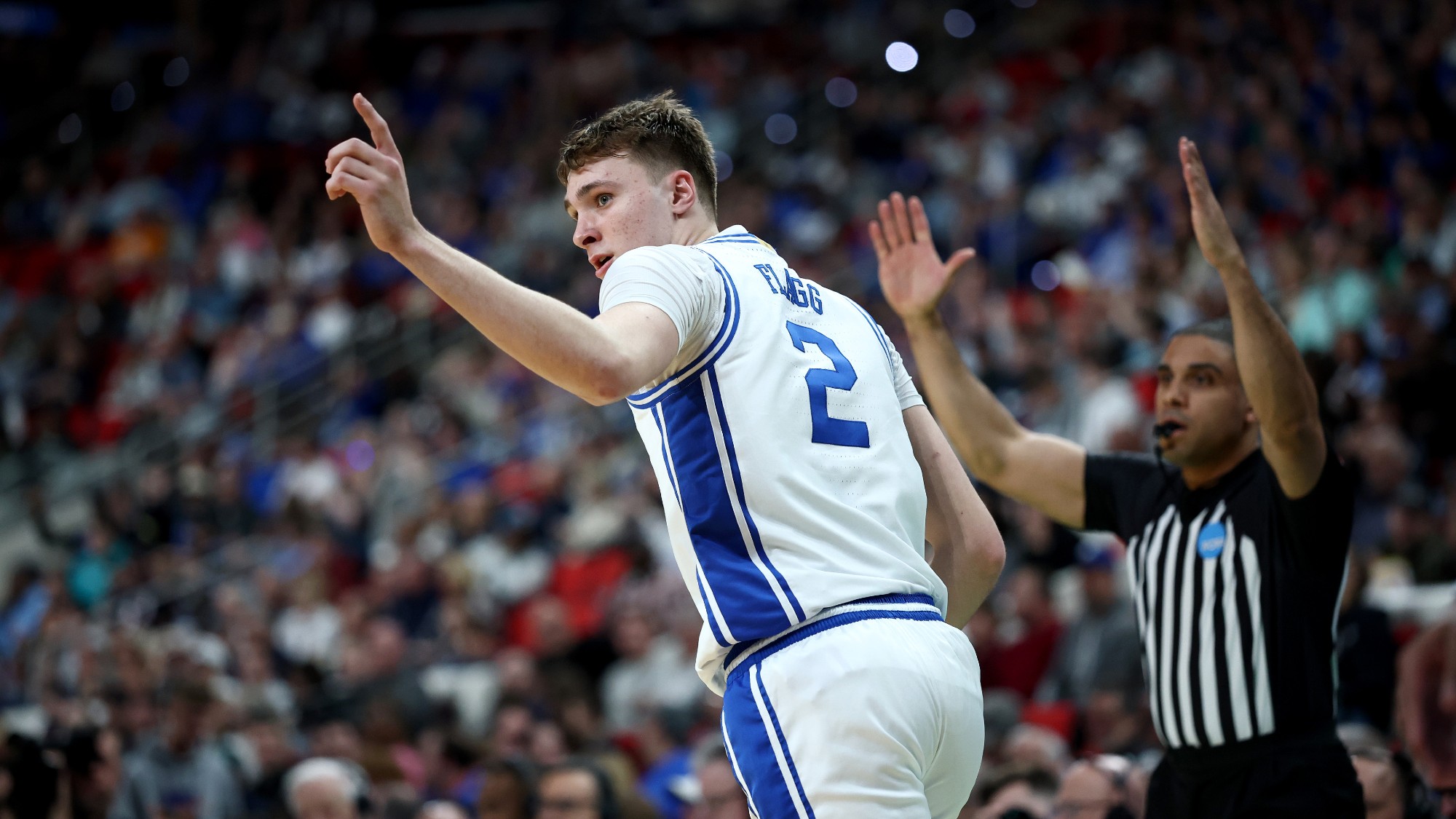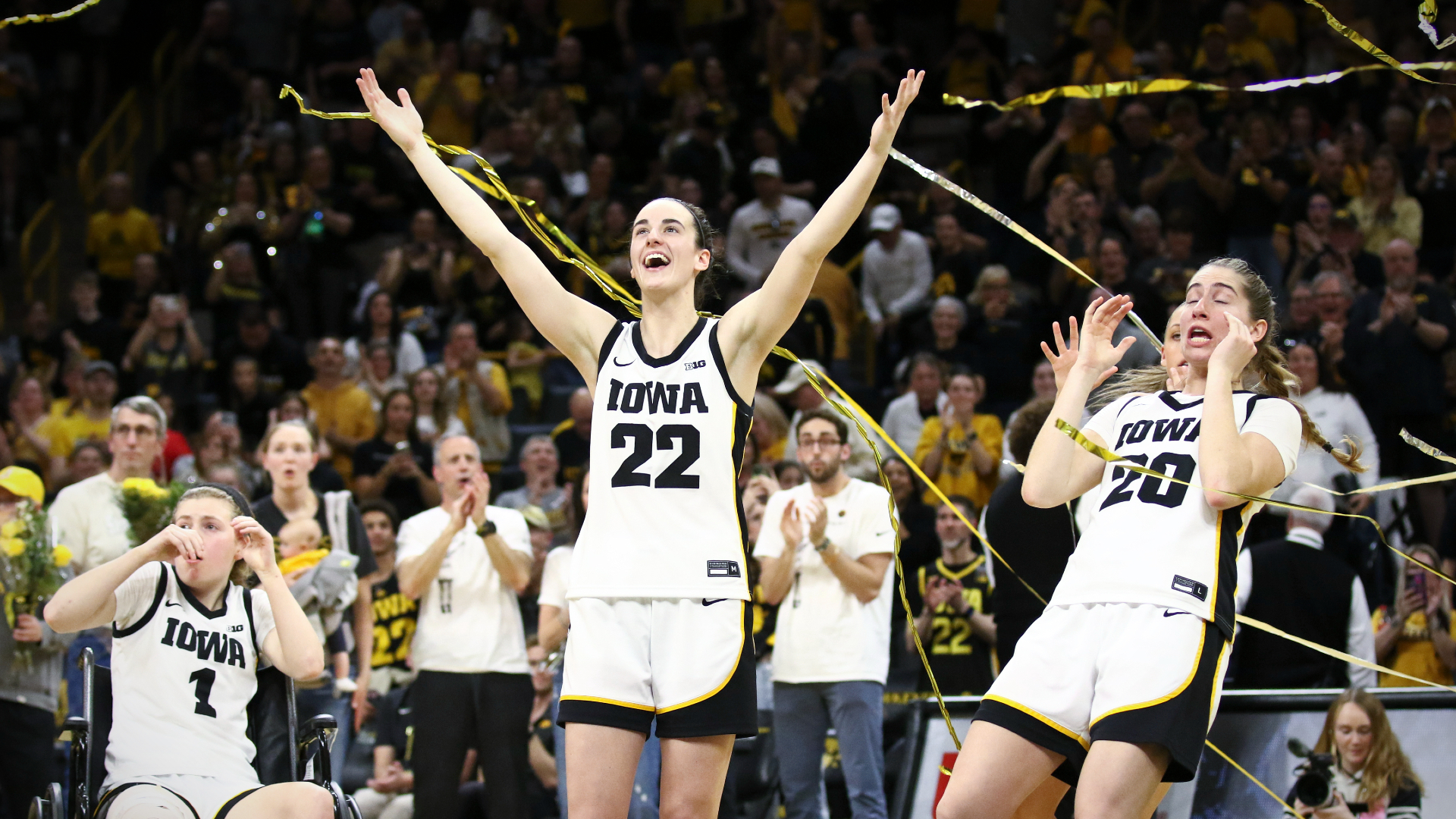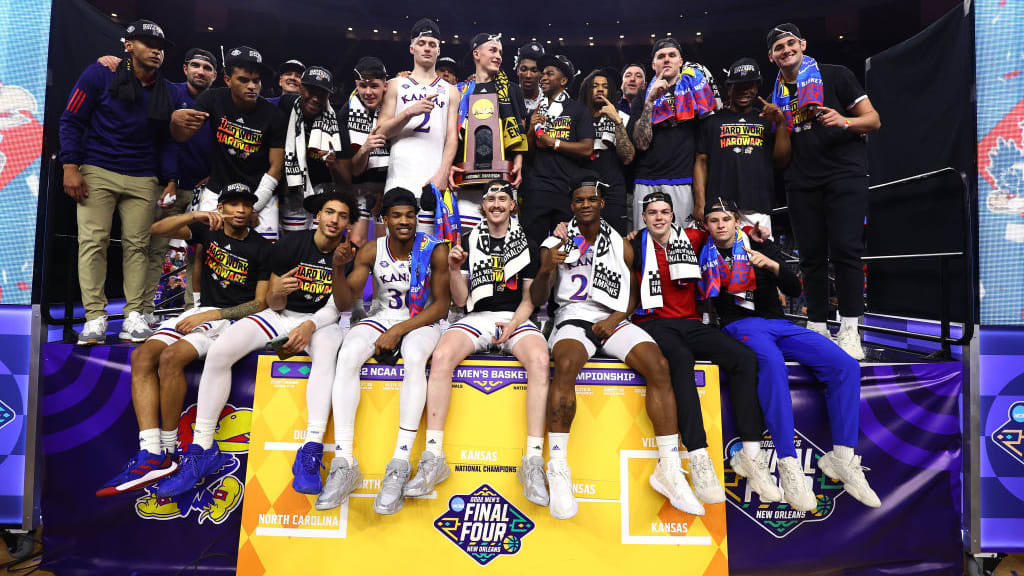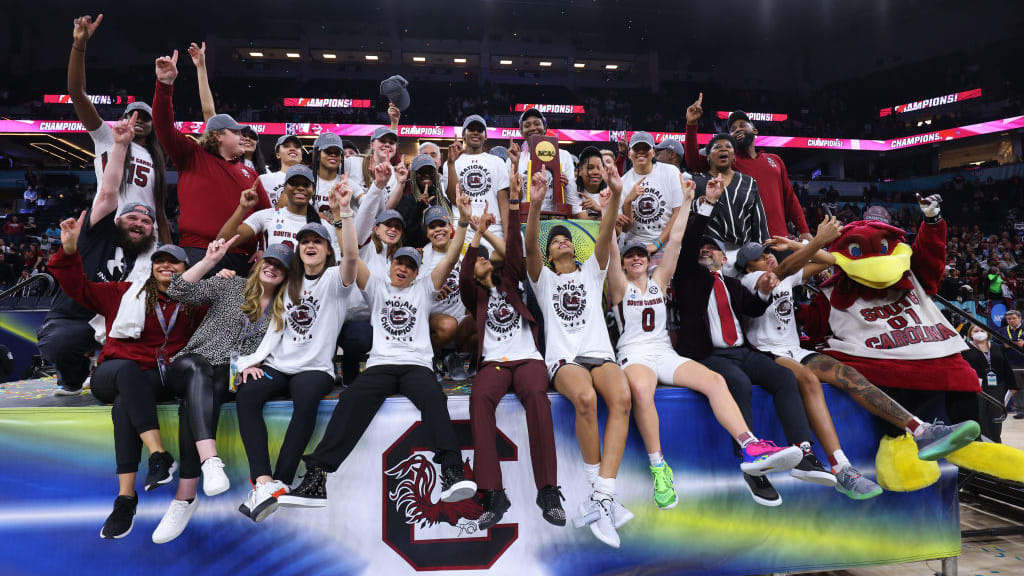Is this year's March Madness too mad?
How rules changes in college basketball produced a "wildly unpredictable" tournament


Welcome to the "Upset Era" in college basketball. The men's Final Four is set, and it features one familiar team— Connecticut, which has won four national championships since 1999 — and three that are first-time visitors to the sport's biggest stage: Miami, Florida Atlantic and San Diego State. No Kansas, no Duke, no Kentucky, no Villanova. The bluebloods have been banished in favor of the scrappy upstarts. (And if you filled out a March Madness bracket this year, well, it's safe to say that it's long since busted.)
It's a "Final Four no one could have seen coming," Sports Illustrated reports. But maybe we should have seen it coming. After all, recent years have seen "some major changes in college athletics" — including vastly loosened rules for players to transfer between universities, as well as the sudden rise of "name, image and likeness" (NIL) rules that let formerly "amateur" athletes make money from endorsements while they're still in college. Miami, in particular, made its first Final Four with NIL deals that lured impact players from Kansas State and Arkansas State.
Even with the changes, the Cinderella slipper definitely fits the new teams. "For the first time since seeding began, the Final Four won't feature a single former McDonald's All-American," Axios notes. But it sure seems like something essential has changed about college sports, the Associated Press' Eddie Pells writes: "Fans might look back on 2022-23 as the season when true parity finally sunk down deep into the bones of America's favorite basketball tournament."
The Week
Escape your echo chamber. Get the facts behind the news, plus analysis from multiple perspectives.

Sign up for The Week's Free Newsletters
From our morning news briefing to a weekly Good News Newsletter, get the best of The Week delivered directly to your inbox.
From our morning news briefing to a weekly Good News Newsletter, get the best of The Week delivered directly to your inbox.
What are the commentators saying?
Some folks think March Madness has gotten a little too mad this year. That might not be good for the sport. "It's a flea-market Final Four, and it takes a good spirit to relish flea markets," Chuck Culpepper writes for the Washington Post. Basketball fans tend to like upsets in the early rounds of the NCAA tournament — and to see the traditional powers standing by the final weekend. This Final Four will test that theory. Will America watch no-name teams battle for the crown or tune out? "Are you as warmhearted as you say you are, or are you just a crusty old prig who wants to watch old empires while eating your chips and seven-bean dip?"
The transfer and NIL rules changes have clearly made an impact on this Final Four, Terry Toohey writes at The Trentonian. The new rules allow players to move between universities without sitting out a year, as they had to do previously. The result? Except for Connecticut, none of this year's final teams are rich in basketball tradition. "What those teams do have, though, are transfers, and plenty of them." Sixteen of the 63 players on the four teams — a full 25 percent — are transfers from other schools. Toohey's advice: "Get used to it."
The rule changes "are helping college basketball, not killing it," Mitchell Forde argues at Athlon Sports. He points out that Miami's Nijel Pack was brought from Kansas State thanks to an NIL deal funded by Lifewater CEO John Ruiz, a Miami "super-booster." The deal was heavily criticized at the time — as proof "that only the most well-funded, blueblood programs could compete" under the new rules. Now? A different perspective might be needed. "Changes in how programs acquire talent and build their teams lead to changes in which teams are competing for a championship," Forde writes. "And that's fun."
What's next?
Former NBA player Charles Barkley thinks the rule changes will eventually reinforce the disparity between traditional college basketball powers and the also-rans. "In the next 3-5 years, we're gonna have 25 schools that's gonna dominate the sport cause they can afford players," he said in a weekend interview with 60 Minutes. "And these schools that can't afford, or won't pay players, are gonna be irrelevant." If that's the case, this year's wacky Final Four might be a one-off instead of a turning point.
A free daily email with the biggest news stories of the day – and the best features from TheWeek.com
In the meantime, TV executives might be worried that the smaller names playing in college basketball's final weekend won't attract TV viewers. The Athletic points to a 2021 interview with CBS Sports chairman Sean McManus, who said the usual powers — KU, North Carolina, Duke — are good for ratings. "We're going to focus on the teams and stories that are in there," he said at the time. "Would we like to have those [traditional power] teams? Sure, we would." The Athletic's conclusion: "This year's Final Four will provide a window into how much bluebloods matter."
In the meantime, college basketball fans should just enjoy this weekend's unusual matchups, Sports Illustrated's Pat Forde writes. The tournament has been "wildly unpredictable" with lots of new storylines. "This Final Four is fresh and strange," he writes, and adds: "Bottom line, the tournament has been great again."
Joel Mathis is a writer with 30 years of newspaper and online journalism experience. His work also regularly appears in National Geographic and The Kansas City Star. His awards include best online commentary at the Online News Association and (twice) at the City and Regional Magazine Association.
-
 Ultimate pasta alla Norma
Ultimate pasta alla NormaThe Week Recommends White miso and eggplant enrich the flavour of this classic pasta dish
-
 Death in Minneapolis: a shooting dividing the US
Death in Minneapolis: a shooting dividing the USIn the Spotlight Federal response to Renee Good’s shooting suggest priority is ‘vilifying Trump’s perceived enemies rather than informing the public’
-
 5 hilariously chilling cartoons about Trump’s plan to invade Greenland
5 hilariously chilling cartoons about Trump’s plan to invade GreenlandCartoons Artists take on misdirection, the need for Greenland, and more
-
 Dozens charged in NCAA game-rigging case
Dozens charged in NCAA game-rigging caseSpeed Read The schemes allegedly involved fixers who paid $10,000 to $30,000 for each rigged game
-
 How is March Madness changing in the era of NIL and sports betting?
How is March Madness changing in the era of NIL and sports betting?Today's Big Question College sports has experienced a revolution. NIL payments are letting players get paid. The rise of sports betting has brought new pressures to the game.
-
 College athletes to get paid after NCAA settlement
College athletes to get paid after NCAA settlementSpeed Read The new revenue-sharing model will see schools pay their athletes a cut of the money they generate
-
 South Carolina ends perfect season with NCAA title
South Carolina ends perfect season with NCAA titleSpeed Read The women's basketball team won a victory over superstar Caitlin Clark's Iowa Hawkeyes
-
 Is this the year women take over March Madness?
Is this the year women take over March Madness?Today's Big Question Caitlin Clark, Angel Reese and other stars make the women's game more popular than ever
-
 Iowa's Caitlin Clark breaks NCAA scoring record
Iowa's Caitlin Clark breaks NCAA scoring recordspeed read College basketball star Caitlin Clark set the new record in Iowa's defeat of Ohio State
-
 NCAA championship: Kansas makes history with victory over North Carolina
NCAA championship: Kansas makes history with victory over North CarolinaSpeed Read
-
 South Carolina beats UConn in NCAA women's basketball championship
South Carolina beats UConn in NCAA women's basketball championshipSpeed Read
